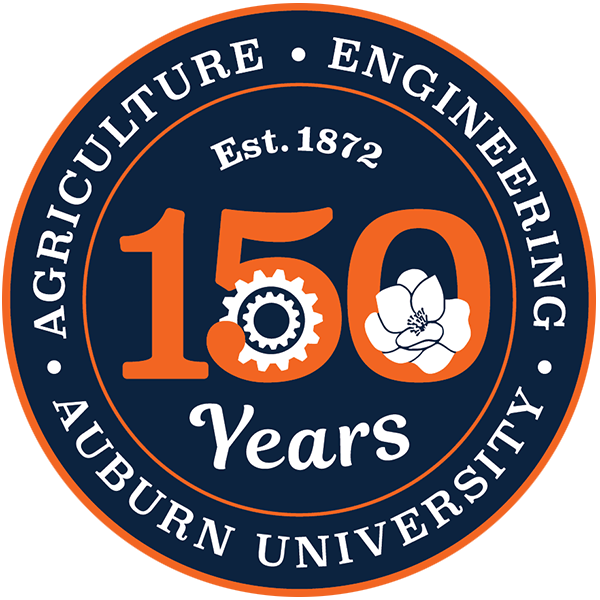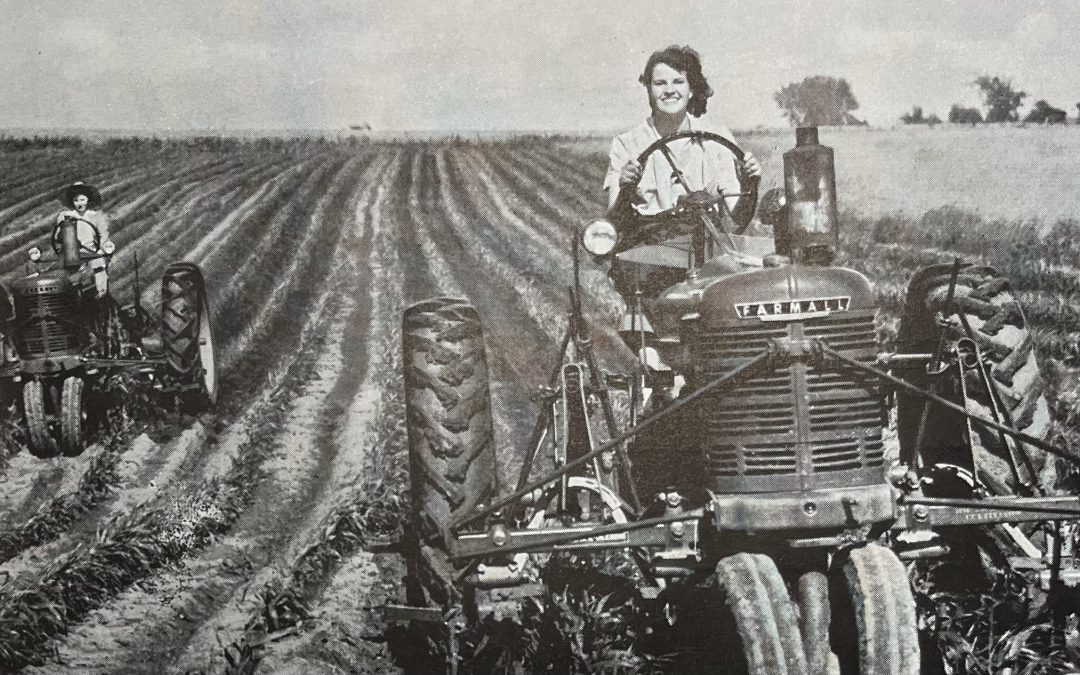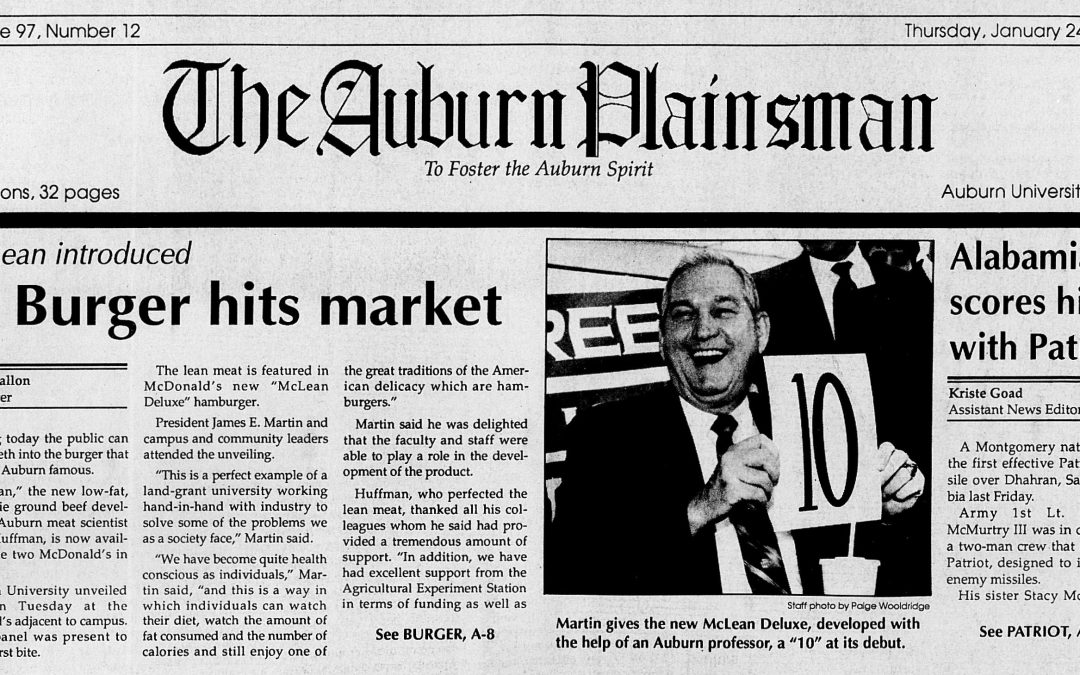AAES evolves to serve current needs of farmers, families
Throughout the 2022-2023 academic year, the College of Agriculture is celebrating its 150th anniversary with content shared from its special edition collector’s book of The Season, publishing in 2023.
“Agricultural experiments will be carried on in connection with the college farm and garden to such an extent as may be necessary for the requirement of instruction, and the means at command.” – Alabama Agricultural and Mechanical College Catalog 1872-73
The founders of what would become Auburn University and the College of Agriculture were not about waiting. That’s why, several years before the formal establishment of an agricultural experiment station, they were already declaring the mission of such an institution and carrying it out, albeit with limited funds.
The state formally established an agricultural experiment station on Feb. 23, 1883, making Alabama the ninth state to do so. Altogether, 13 states were operating tax-supported agricultural research farms before the national system was authorized by the federal government’s Hatch Act of 1887, a move that resulted in annual funding to ensure continuity in research programs.
From a simple declaration in 1872, the Alabama Agricultural Experiment Station (AAES) has since grown into an interdisciplinary statewide organization that encompasses the work of almost 200 researchers in five colleges and schools and at six interdisciplinary research centers and institutes located on the Auburn campus and at 15 outlying research units throughout the state.
The Experiment Station contributes to Auburn University’s land-grant mission of instruction, research and extension by seeking innovations and scientific discoveries that improve and protect the health and well-being of the citizens of Alabama, the nation and the world.
AAES studies and the development and application of new technologies support and enhance Alabama agriculture, forestry and related business and industries and promote the environmentally and socially responsible development of Alabama’s food and energy supplies, natural resources, communities and economies, while also addressing the most pressing health and social issues of the day. The Alabama Agricultural Experiment Station represents faculty and staff researchers from within five Auburn University colleges and schools. Including and led by the College of Agriculture, College of Human Sciences, College of Sciences & Mathematics, School of Forestry & Wildlife Sciences and College of Veterinary Medicine.
Much of the research in the Alabama Agricultural Experiment Station is conducted at research centers and units located through the state.
The AAES system of stations began in 1883 with the establishment of one station for research experiments in what is now the Agronomy Farm on campus. The Old Rotation and The Cullars Rotation were two of the early experiments to be initiated and continue today.
In 1927, five locations known as substations were added relative to the major soil typed in Alabama. Those substations were the Tennessee Valley Substation (Belle Mina), Sand Mountain Substation (Crossville), Black Belt Substation (Marion Junction), Wiregrass Substation (Headland) and the Gulf Coast Substation (Fairhope).
As time progressed, legislation was passed to add 10 experimental fields across the state that are more localized in their research efforts. Those stations have changed over the years with some being discontinued or moved and others added as the needs of the state changed. As many as 23 units operated for a period but that number of stations is generally held to about 15.
Today, the AAES maintains active research on 11 units. An additional two units, the Upper Coastal Plains Ag Research Center (Winfield) and the Piedmont Research Center (Camp Hill) are under Memorandum of Understanding with the College of Veterinarian Medicine and Forestry and Wildlife to operate and conduct research on sites owned by the AAES. Three other units, Lower Coastal Plains Ag Research Center (Camden) Turnipseed-Ikenberry Place (Union Springs) and the Monroeville Experiment Field (Monroeville) do not have active research projects but are used to generate revenue for the system. One location, the North Alabama Horticulture Research Center (Cullman), is slated for repurpose.
The AAES outlying units conduct approximately 500 experiments per year in every discipline of the College of Agriculture except fisheries and poultry science, which have centralized units close to campus. Total staffing currently stands at 100 employees across the state.
Leading the AAES from “boots-on-the-ground” experience
One person who has seen the work of the AAES literally from the ground up is Greg Pate, director of research operations for outlying units of the Alabama Agricultural Experiment Station since 2021.
Pate previously served as director of the E.V. Smith Research Center at Auburn University, the largest, most visible and most comprehensive agricultural facility in the state with research units in beef cattle, horticulture, plant breeding, field crops and biosystems engineering.
As director of research operations, Pate coordinates and approves research projects conducted at the AAES’s 15 regional units and ensures appropriate resources are provided.
“I’ve been in the system as a director for 15 years,” Pate said. “We were able to effect some good change at E.V. Smith, and I wanted to try and extend thatto a wider base of influence throughout the state. Having directing experience, being on station, and understanding the system and what we go through to do ag research from a boots-on-the-ground standpoint has proven beneficial to me.”
When Pate came to the AAES in June 2006 as superintendent of farm services at the E.V.Smith Research Center, the unit was more of a support unit for all other research units. Over time, research projects were added in soil fertility, precision agriculture and irrigation technology.
Pate sees the mission of the research stations to provide the resources necessary for faculty and other investigators to address agricultural issues through highly controlled field experimentation.
“The staff on station apply science to farming in a way as to allow us to parcel out variability and obtain quality data so that researchers have a high degree of confidence in recommendations,” he said. “We also serve as the face of Auburn University, the AAES and the Alabama Cooperative Extension System to the public throughout the state through tours, workshops and field days, thereby becoming a vehicle for information exchange.”
Working at E.V. Smith, the most visible of the state’s centers located just off Interstate 85, Pate always felt a special responsibility to showcase the work of the AAES.
“It has always been important to me to have stakeholders present on the station to not only see what we do but to gain knowledge that they can take home to benefit their farming operations or home enterprises,” he said. “I believe the visual component of learning is enhanced when people see farming practices or treatments in a test that demonstrates what they can do on their farms.”
While serving as director at E.V. Smith, research programs in precision agriculture and irrigation technology made a widespread impact on farming in the state, Pate said.
“Those research programs fostered higher levels of acceptance within the farming community and led to more efficient operations on farms in Alabama,” he said. “We also have expanded cattle research from a single winter-annual grazing project to a portfolio that encompasses grazing, animal health, production and marketing research related to cow-calf systems in Alabama. That unit now conducts multiple projects annually with Auburn faculty in conjunction with corporate partners.”
E.V. Smith also was host to the Ag Discovery Adventure field day that brought stakeholders and public visitors to a comprehensive field day unequalled in scope within the state. The Alabama Cooperative Extension System event ran for six years with the last day drawing 3,000 visitors. In the six-year run, there were more than 10,846 visitors to the station.
“More recently, we have engaged in a corporate partnership with Yara International to use a part of the station for soil fertility research and product evaluation and development,” Pate said. “This relationship has garnered much needed capital for research operations and given the company a home base within the Southeast.”
Pate witnessed and helped initiate major changes in agriculture while at E.V. Smith, including using technology to enhance farming.
“We have seen the introduction and implementation of mechanical technology to every element of production agriculture,” he said. “Sprayers, planters, tractors, irrigation systems and harvest equipment all employ some level of technology to either control or monitor operations and applications. The level of precision with which applications are made, or environmental factors are monitored, is unprecedented in agriculture and offers more efficient control of valuable inputs and yield monitoring.”
Biological technologies also continue to expand, offering resistance to herbicides, insects and disease, Pate said. Environmental impacts of farming are greatly reduced by reducing pesticide and irrigation applications while helping producers find avenues for profitability.
“Evaluating these technologies for efficacy and impact is a major work for the stations,” he said. “Variety testing and production experiments validate the systems before they reach the farmer.”
Since being named director of outlying units, Pate says he has gained a better understanding of the unique responsibilities of each unit.
“Each station is uniquely positioned to answer farm-related questions in their respective areas with science-based experimentation. Each one plays a critical role to our mission.”
Although personnel, techniques and technology have changed over the years at the AAES, the mission to serve the stakeholders of Alabama with high-quality, science-based research data stays the same.
“We must continue to adapt to the changing agricultural environment without sacrificing our commitment to science-based recommendation,” Pate said.
As for the future of the AAES, the outlying units will continue to function as a critical part of the operations, Pate said.
“Even as science moves more and more towards genetic and biotechnological disciplines, there will still be a need to validate in the field through testing,” he said. “Also, as our general public population gets farther removed from the farm, there will be an increased need to invite them to the stations to see and learn for themselves the value of agriculture in Alabama.”
The AAES will continue to update technologies as dictated by trends in agriculture and look for ways to become more efficient within its own system, Pate said.
“Currently, we are moving to a regional management model that will allow us to maintain the stations in geographic regions that will serve as platforms for the three main agricultural disciplines in Alabama: cattle, row crops, and horticulture.
“Other research areas, such as pest management and engineering, will fit within those three disciplines and find representation in all four regions. The locations of the stations will continue to serve the local areas, but they will become more associated with the other units within a region. This will allow for more efficient and effective allocation of resources across the outlying units and help us serve our stakeholders.”






